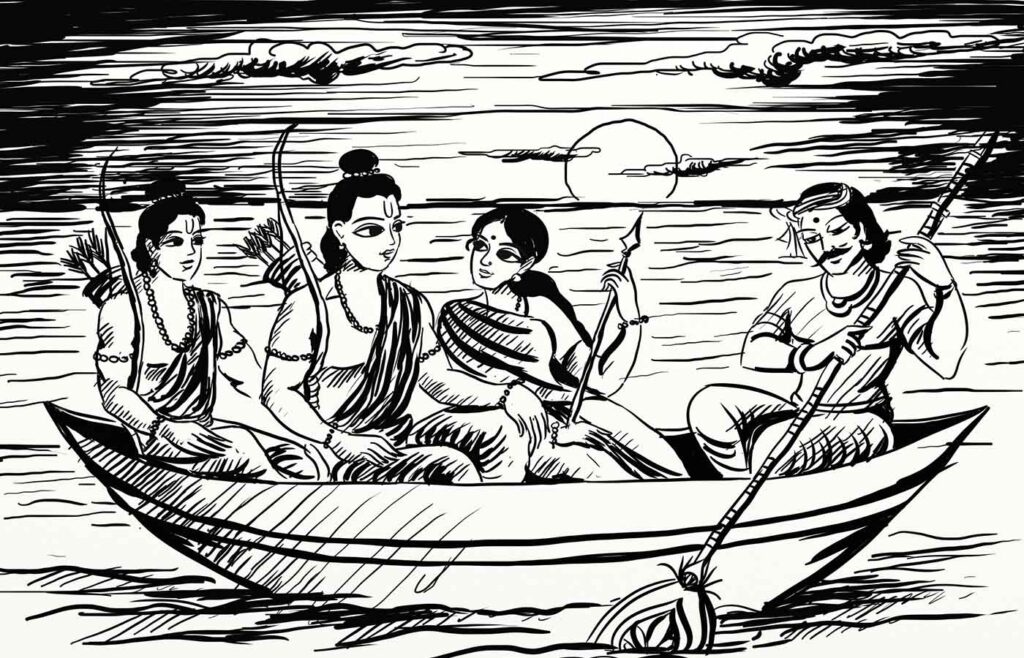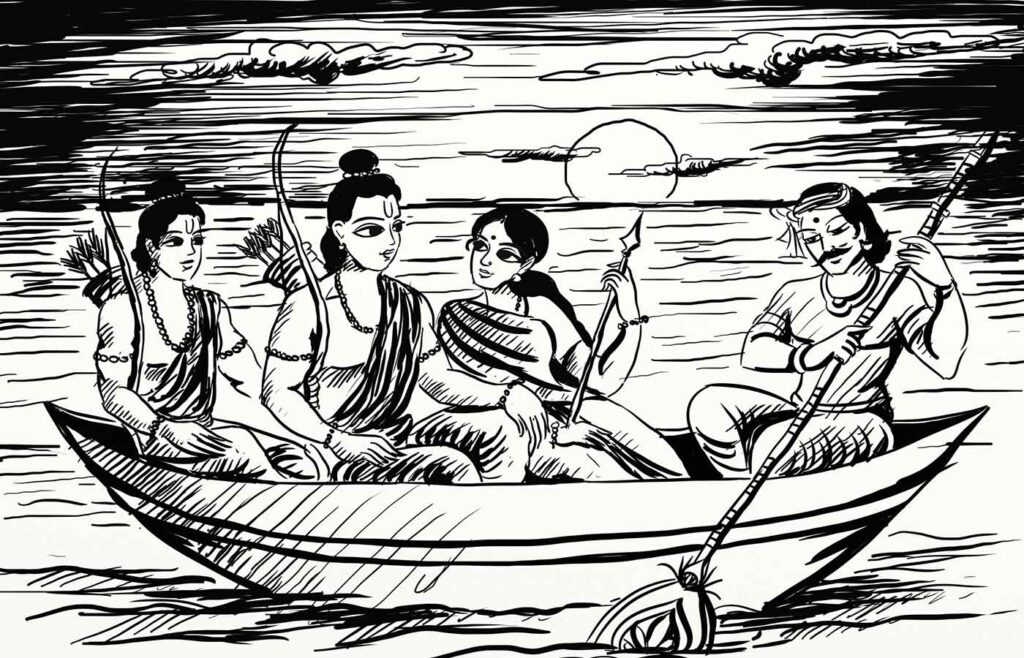“All the sleepers in a night of delusion beholding so many dreams. In this world of darkness, only those who serve themselves from the material world become absorbed in the contemplation of the supreme. None can be regarded as really woken up from sleep till they have renounced all sensuous delights.”
~Sage Valmiki
Among various distinctions of counting, as many as three versions of the epic poem, the Ramayana, the primordial version is recognized to be the Sanskrit version earmarked to the Sage Valmiki.
Countries like Burma, Indonesia, Cambodia, Laos, the Philippines, and China have conceded with the eminence of this epic poem. Originally the Ramayana was written by Valmiki, but there have been numerous versions and translations into regional language. Even though these versions have often been marked more or less by plot twists and thematic, they define the versatility of thought. Some of the most captured adaptations of the classic tale include the 12th century Tamil language Ramavataram, the Khmer Reamker, the Old Javanese Kakawin Ramayana, and the Thai Ramakien and the Laos Phra Lak Phra Lam.
Sanskrit Versions
Various Sanskrit versions are Adhyatma Ramayana, Vasistha Ramayana, also known as Yoga Vasistha, Laghu Yoga Vasishtha, Ananda Ramayana, Agastya Ramayana, Adbhuta Ramayana. The Ramayana story has also been recounted with other Sanskrit texts, including the Mahabharata; Bhagavata Purana, which quotes a concise account of Lord Rama’s story under its ninth skandha; a brief highlight is also seen in the Vishnu Purana as well as in the Agni Purana.
Regional Versions
Here are some noteworthy regional versions of these additional renderings of the Ramayana include:
1. North India
The “Ramacharitamanasa”, written by Sage Tulsidas in the 16th century, is one of the most popular versions of Ramayana in North India.
2. Jammu and Kashmir
The Kashmiri “Ramavatara Charita” was written in the 19th century.
3.Gujarat
The poet Premanand Swami in the 17th century, wrote the Tulsi-Krit Ramayan, a Gujarati adaptation of Tulisdas’ Ramayana.
4.Maharashtra
The Marathi “Bhavartha Ramayana” was written by Eknath in the 16th century. There is a credential to Ramayana being translated into old Marathi during the 12th or 13th century.
5. Assam
The Assamese “Katha Ramayana” or “Kotha Ramayana” in the 15th century by Madhava Kandali.
6. Bengal
The Bengali “Krittivasi Ramayan” written by poet Krittibas in the 15th century.
7. Orissa
The Oriya Dandi Ramayana or Jagamohan Ramayana was adapted by Balaram Das in the 16th century.
8.Andhra Pradesh
The Telugu version of the Ramayana, “Sri Ranganatha Ramayanam” was adapted by Buddha Reddy. The “Molla Ramayanamu” was adapted by poetess Molla.
9. Karnataka
The Kannada version of the Ramayana – the “Kundendu Ramayana”, was written in the 13th century, whereas the “Kumara-Valmiki Torave Ramayana” was written in the 16th century.
10. Tamil Nadu
The Tamil version “Kambaramayanam” was written by poet Kamban in the 12th century.
11. Kerala
The Malayalam language “Adhyatma Ramayanam Kilippattu” was written by Thunchaththu Ezhuthachan in the 16th century.
12. Nepal
The Nepali language “Bhanubhakta Ramayan” was written by Bhanubhakta Acharya in the 19th century. The Nepal Bhasa “Siddhi Ramayana” was written by Siddhidas Mahaju in the 20th century.
13. Goa
Ramayanu written by Krishnadasa Shama in 15th century in Kaggalipura, Goa in Konkani,manuscripts found in Portugal.
14. Kannada
Two prose works by Nanadalike Lakshminarayana (‘Muddanna’) entitled Adbhuta Ramayana (1895) and Ramaswamedham (1898).
15. Urdu
An Urdu language version was called the “Pothi Ramayana” and was written in the 17th century.
“A veena cannot exist without its strings. A chariot cannot exist without its wheels. And without her husband, a wife can never live happily even though she has hundreds of sons.”
~Sita to Kaushlya
Lord Rama’s life has taught a lesson of respecting diversification in all walks of life. Through his fourteen years of exile, he showed utmost humanity to every creature of life irrespective of caste and creed. This lesson is significant because even though there are three hundred versions of this epic poem, the moral remains the same!



